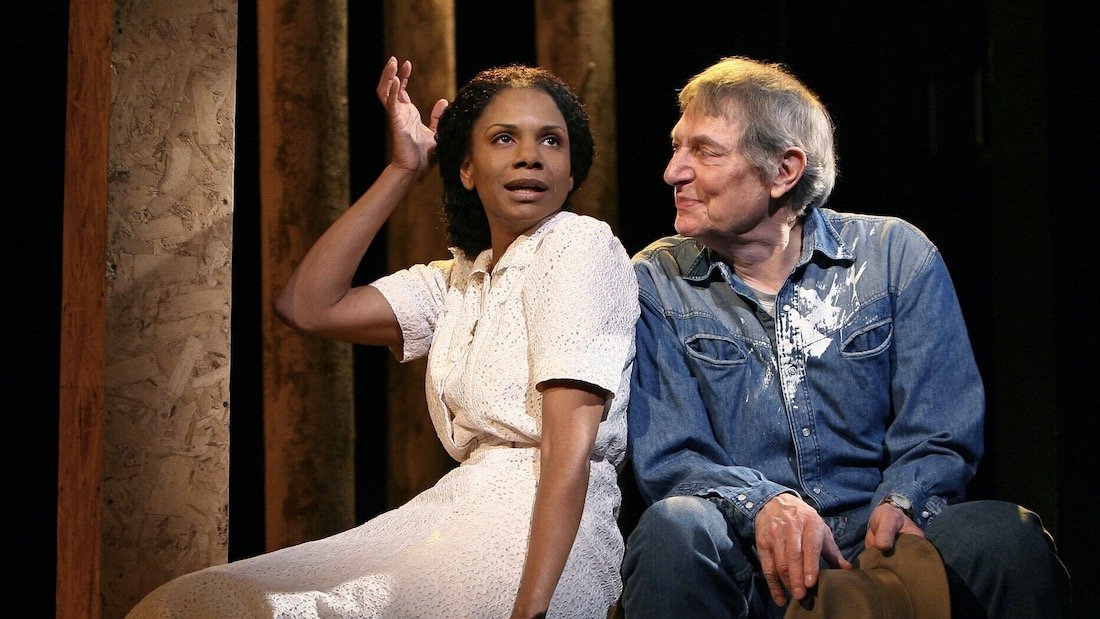
Tim Firth’s Calendar Girls (US/UK) brings to life the bittersweet and inspirational journey of a group of Yorkshire women who captured hearts globally with their unconventional method of raising money for cancer research. From the screen to the stage, every iteration of this story has resonated with audiences. But who were the real Calendar Girls? And what were the circumstances surrounding their remarkable fundraising efforts? In this segment of The Truth Behind…, we deep-dive into the fascinating true events behind the fiction.
The Calendar Girls
In the show:
An exquisite slice-of-life cross-section, the titular Calendar Girls capture the unique combination of personalities required to pull off such an audacious scheme. The ringleaders Chris and Annie are together “greater than the sum of their parts” and would be “lesser humans had they not met each other.” Together, they rally and unite the other Women’s Institute members: the eclectic and witty Cora, the fearless and sharp Jessie, the rebellious and affluent Celia and the underestimated and soulful Ruth.
While each woman is in herself a fascinating character, it is the relationships they cultivate as a group that serve as the beating heart of the show. Their range of experiences and ages allow the group to support each other through the difficult moments in their personal lives and navigate their unexpected rise to national fame.
In real life:
While the fictional adaptation of the real-life story features six calendar girls, in truth eleven members of the WI were photographed. However, only six members sold the rights to their life story: Angela Baker, Tricia Stewart, Beryl Bamforth, Lynda Logan, Christine Clancy and Ros Fawcett, resulting in the number of characters seen on stage and screen. Tricia Stewart, the inspiration for Chris, eventually wrote a book detailing her experiences following the publication of the calendar. She is now a motivational speaker and uses her engagements to continue fundraising efforts for Blood Cancer UK. Angela Knowles, the inspiration for Annie, became the main spokesperson for calendar sales and future adaptations of their story. From 2006 to 2013 she was a trustee of Blood Cancer UK, a specialist blood cancer charity, and then became its honorary president. In 2019 she was presented with an MBE in recognition of her contribution to fundraising efforts.
As the years passed and their story evolved into a film, musical and stage play, the Calendar Girls continued to ensure the focus remained on fundraising for lymphoma research and treatment. In addition to these efforts, the adaptations of their story had significance for the underrepresentation of middle-aged women in roles other than those of wife and mother. The legacy of Angela, Tricia, Beryl, Lynda, Christine and Ros is one rooted in the depth of friendship and fighting for change in the wake of tragedy.
John
In the show:
John is Annie’s husband and is the human embodiment of the sunflower later chosen to honour him. He is the kind of person who steadily exists in the background, supporting his wife and her friends through their endeavours, allowing them to occupy the spotlight. It’s the kind of support no one notices until it’s gone. Not a saint, not a hero, just a normal, lovely person. His death leaves a gaping hole in the lives of those who knew him.
In real life:
John Baker was Angela Knowles’s husband, and the two lived a quiet life together in Yorkshire. He was an assistant national park officer. In February 1998, John was diagnosed with non-Hodgkin lymphoma, a diagnosis made all the more shocking by the fact that he had rarely been ill. His illness progressed quickly, and he was soon moved from the Airedale Hospital to Leeds for further treatment. While John’s illness limited the number of visitors he could have, Angela’s close friends Tricia and Lynda visited one day, where they entertained John with the idea that the Women’s Institute should do a Pirelli-style nude calendar to raise funds for Blood Cancer UK. They discussed which month each WI member would be, and John teased them, saying “It’s a fantastic idea but you’re all talk, you’ll never do it.”
Shortly after his diagnosis, the couple’s daughter-in-law Georgina suggested they plant sunflowers with the idea that by the time they bloomed, John would be in remission. Tragically, John passed a mere five months after his diagnosis, well before the sunflowers had a chance to bloom. However, these sunflowers became an emblem of the Calendar Girls and are included in each photograph in the calendar in honour of his life.
The Calendar
In the show:
The vehicle for the action of the play, the calendar project is largely driven by John’s encouragement in an effort to distract Annie from his progressing illness. Amateur photographer Lawrence steps on the scene and is immediately perfect for the job (despite having only photographed his relatives up to this point). In his early 20s, Lawrence strikes the perfect balance between hesitancy and spirit to make the WI women comfortable enough to embark on the creation of their daring calendar. Upon its publication, the calendar whips up a maelstrom of media attention, catapulting the pictured women to national, and then international fame.
Like most projects in the public eye, the calendar creates positives and negatives for its pictured members. While fundraising efforts are more successful than any of the WI members could have dreamed, the scrutiny of the pictured members’ personal lives inevitably causes tension. The calendar is a beautiful representation of the cycle of grief – it causes people to lash out at those who they are closest to. Only when the grief has been fully felt and acknowledged can healing begin.
In real life:
The real calendar was shot by Terry Logan, Yorkshire artist and husband of real life Calendar Girl Lynda Logan, whose eye for composition and crafting a striking image was instrumental to the calendar’s creation and ultimate success. Printed with a company called Bermuda, the initial plan was to print 1000 copies and sell them for £5 each, ultimately hoping to raise a total of £5000. However, the company encouraged them to print 5000, as anything less than that wasn’t economical. Though they were skeptical that the calendars would sell, the WI women agreed and put out an informal press embargo prior to the calendar’s launch on 12 April 1999. Expecting the press launch to be a quiet affair, the WI members were shocked when they arrived at the pub where it was being held to find a scene of mayhem, with the entryway being so crowded they couldn’t even get inside. The story had been picked up nationally, and the first print of the calendar was sold almost instantaneously.
The press launch was the beginning of what would become an international affair. Multiple reprintings of the calendar initially raised a sum of £322,000 which, after consulting with the physicians who had treated John, the group decided would be presented to Blood Cancer UK. The ties between the calendar and Blood Cancer UK have remained strong ever since. To date, the calendar has raised upwards of £6,000,000, all of which continues to fund research efforts and treatment.
For more information about Calendar Girls the play, visit Concord Theatricals in the UK or US; or Calendar Girls The Musical in the UK.

Plays that Inspired Musicals

QUIZ: Which Character from The Lightning Thief Are You?

